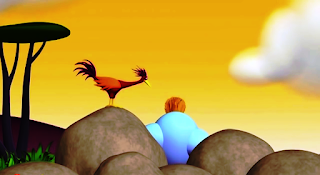Addressing Low Proficient Learners – 9
Generating Parodies of Popular Songs (Continued)
As we have discussed in the
previous two posts the pre-requisite for generating parodies of popular nursery
rhymes and songs at the primary level is to generate them line by line with the
help of a few interaction questions. The
modules are meant for children of classes 1 to 4. In the case of low proficient
readers graphic reading takes place, which eventually glides over to genuine
reading. Here reading alone is not targeted; the focus is on giving holistic
(i.e., discourse level) input to learners so that they acquire language
non-consciously. The process suggested can be extended to classes 5 to 8 as
well if songs suitable to this level of learners are available. Before taking up a song for the higher levels of learners let
us see how the same song (i.e., Five little babies ...) can be used in a different way in classes 3 to 8.
Module 5: Generating Parodies – Classes 3 to 8
Brainstorming on the video song
- Play the video once and interact in the following lines.
What is the song about?
Who are the characters?
What are the actions /events
mentioned in the song?
Replacing the characters and Actions (Whole class Activity)
- Generate a discussion as suggested in the following lines.
Shall we generate parodies for this song? What are the possible strategies?
- Elicit and write the following on the chart.
Changing the characters
Changing the events / actions
- Continue brainstorming.
The central characters in the song that you listened to are five little babies;
the event is, babies jumping on the bed.
Let us change the central characters. What are your suggestions?
- Elicit names of characters such as the following and write them on the left side of the board.
Kitten; birdies; puppies; piggies;
parrots; rabbits; etc.
Now let us think of different
events. What are your suggestions?
- Elicit events and actions
Climbing on a tree; flying in the
sky; running down the hill; perching on a branch; playing with a carrot; etc.
Now we can put these together to get the first two lines.
Try with kitten.
- Elicit the first line:
Five little kitten climbing on a tree
We need three more lines. What shall we do now? What happened to one kitten when it was climbing on a tree? What happened after that?
- Elicit lines like the following:
One fell down and broke its leg
Mama called the doctor and the doctor said
No little kitten climbing on the tree.
Replacing characters and events (Group activity)
- Assign different characters, events and actions to groups. Let each group produce a parody of the song.
- Let each group write their parody on a chart and illustrate it.
- After each presentation elicit suggestions for refinement from the whole class.
- Give feedback.
Generating parodies (Individual Activity)
- Let students make their own choice of characters, events and actions and create similar parodies.
- Tell them they can also think about human beings and events and actions related to them.







































